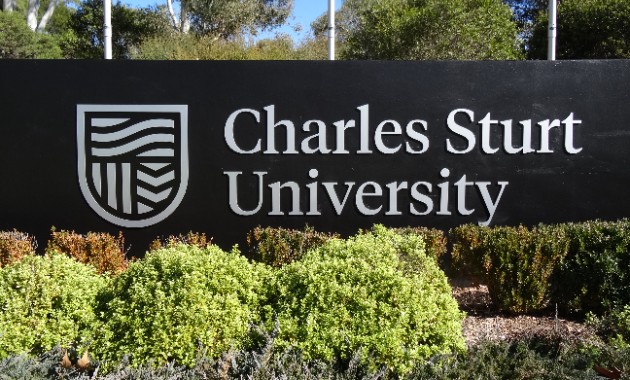Long used building methods have combined with modern technology to create one of Australia's leading examples of environmentally sensitive design and architecture at Charles Sturt University's Thurgoona Campus, where NSW Minister for Education John Aquilina, will officially open its newest buildings, tomorrow, Thursday 27 April.
The cutting edge "green" campus is a unique example that demonstrates the ability to develop and build a fully functional environmentally sensitive community and a blue print for future major public building design.
The complex includes a 200-seat lecture theatre featuring cooling provided by artificial waterfalls and an earthen roof, along with a number of small lecture theatres and teaching rooms, and rammed earth student accommodation buildings.
The Minister will open the major teaching complex on the campus and attend a ceremony to name the new student accommodation cottages on Thurgoona, to be called The Rothwells after the former Head of CSU's Albury-Wodonga Campus, Professor Bryan Rothwell, and his wife Pauline. CSU Chancellor Mr David Asimus will lead this ceremony.
Professor David Battersby, Head of Albury-Wodonga Campus, said long used building techniques and modern technology have been combined on the Thurgoona site to demonstrate the "cutting edge" of environmentally responsible architecture in Australia.
"The Thurgoona Campus demonstrates how architecture and landscape design can relate to lifestyles and the land, based on the responsible use of resources and consideration of the local climate," Professor Battersby said.
CSU's Director of Design Marci Webster-Mannison, who lead the team who designed the site, said Thurgoona "is a developing, dynamic model of how communities can address environmental concerns and sustainable living for decades to come".
"We brought together the ancient use of rammed earth, modern technologies such as solar heating and environmental control using computers and some careful planning to produce what we believe are the most advanced environmentally sensitive public buildings in Australia," Ms Webster-Mannison said.
Eleven rammed earth buildings, including a two-storey office building for the School of Environmental and Information Sciences, a student amenities building and a herbarium, have been built since 1995. The buildings also feature incorporate dry composting toilets, which use no water.
The water management system for Thurgoona, which was first put in place in 1995, is an integral part of the environmentally sensitive plan for the campus.
Artificial watercourses have been constructed to collect and treat storm water and artificial wetlands used to treat water from kitchens, laundries and showers in the buildings. This water is re-used to assist in the cooling of buildings during summer and to irrigate the campus grounds.
The former farmland surrounding the buildings have been extensively sown with plants native to the Murray Basin, which also require little water. These plants are also part of the herbarium collection, which aims to store samples of plants from around the Murray-Darling Basin.
The water management system has already won two RiverCare 2000 awards from the NSW Government and in 1999 was named top NSW education facility for water management by the Australian Water and Wastewater Association.





Social
Explore the world of social